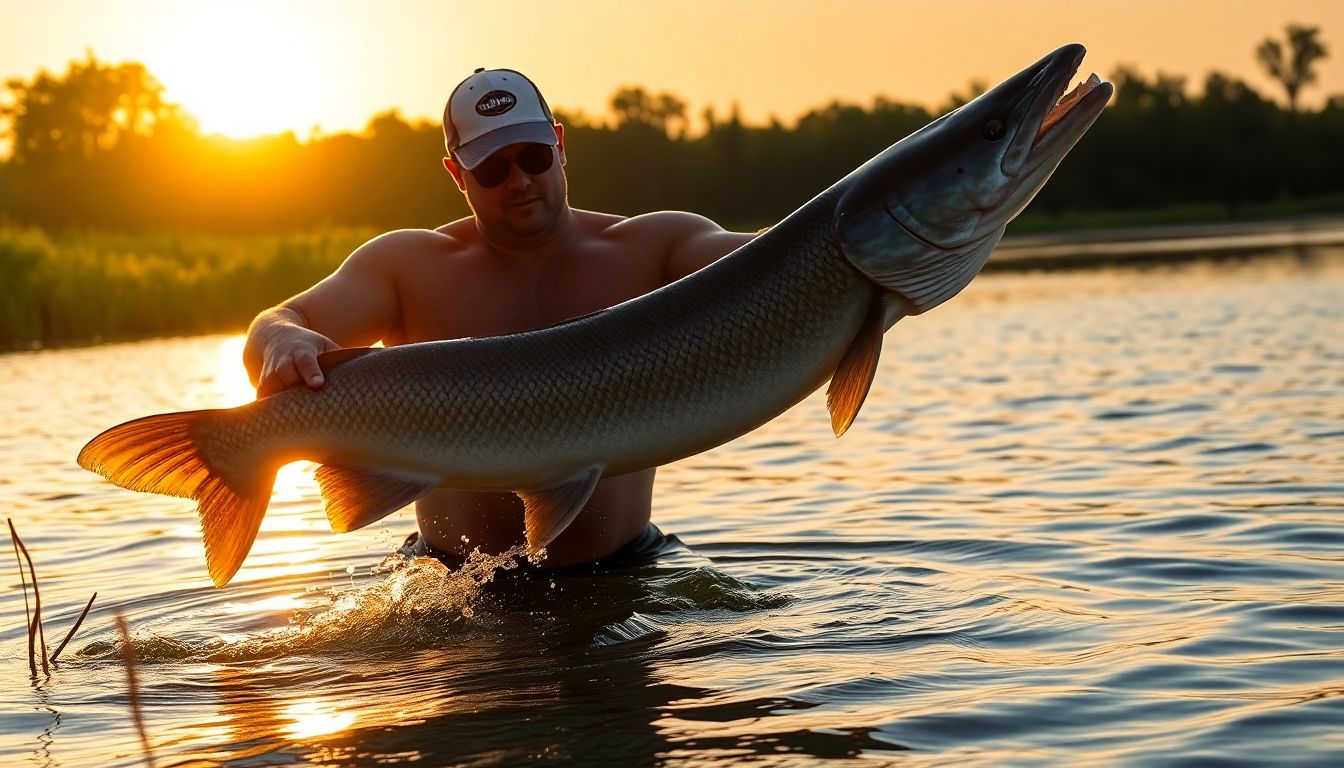
A massive muskie, stretching an impressive 50 inches, was recently caught at Kinkaid Lake, sparking excitement among local anglers. Such a trophy fish is rare and symbolizes the quality of muskie fishing in the area. Kinkaid Lake, known for its rich aquatic life and vibrant fishing community, continues to be a top destination for fishing enthusiasts across Illinois.
The Illinois Department of Natural Resources (IDNR) conducted its 2024 muskie creel survey to better understand the muskie population in the state. This survey provides invaluable insights into fish numbers, sizes, and health. By tracking these statistics, the IDNR aims to maintain and enhance the muskie fishery.
This article explores the significance of the 50 inch muskie catch in the context of the 2024 creel survey, highlighting its implications for Kinkaid Lake's muskie population and fishing regulations.
Kinkaid Lake: A Muskie Fishing Hotspot
Kinkaid Lake's Physical Characteristics and Habitat
Kinkaid Lake spans approximately 2,750 acres and reaches depths of over 40 feet. Its clear waters and rich vegetation create an ideal environment for muskie to thrive. The lake features:
- Varied depths that provide habitats for different fish species.
- Abundant aquatic plants like coontail and lily pads, which offer cover and breeding grounds.
- Areas with submerged structures, such as fallen trees and rocks, that attract muskie.
Fishermen frequently report successful catches near the dam and along the eastern shoreline, where these conditions are particularly favorable.
Historical Muskie Data from Kinkaid Lake
Recent years have shown a steady increase in both the number and size of muskie caught here. Data from the IDNR reveals:
- Average muskie lengths have risen from around 36 inches to over 40 inches in the last five years.
- The percentage of muskie over 50 inches has also risen, marking this year's catch as particularly important.
The recent 50 inch muskie stands out against this trend, representing a significant achievement for anglers and the lake's health.
The 2024 Illinois Muskie Creel Survey: Methodology and Results
Survey Methodology: How the Data is Collected
To gather accurate data, the IDNR employs various methods, including:
- Angler interviews, where fishermen share their catch details.
- Creel clerks stationed at popular fishing sites to record catches in real time.
- Electronic reporting platforms for more comprehensive data collection.
These techniques help ensure that the data reflects the true state of the muskie population in Kinkaid Lake and across Illinois.
Key Findings from the 2024 Survey
This year's survey revealed promising results, showing:
- A statewide increase in muskie catch rates.
- Average sizes across various lakes, with Kinkaid Lake leading in both size and quantity of catches.
The standout 50 inch muskie from Kinkaid Lake adds significant weight to these findings, emphasizing the lake's quality as a prime muskie habitat in Illinois.
Data Analysis and Interpretation
The discovery of the 50 inch muskie has strong statistical significance. It showcases not only the health of Kinkaid Lake's muskie population but also reflects more extensive environmental factors at play. Addressing potential biases, the IDNR ensures thorough training for creel clerks and implements random sampling methods for a diverse representation.
The 50 Inch Muskie: A Case Study
Details of the Catch: Angler, Location, and Techniques
The catch was made by an experienced local angler known for their deep knowledge of the lake. Fishing from a boat near a submerged point, they used a large spinnerbait to lure the muskie. This location, rich in structure, provided the perfect setting for such a large catch.
Biological Significance of the Fish
This 50 inch muskie suggests considerable age and growth, likely indicating a healthy growth rate. Healthy muskie populations require robust food sources, so the presence of such large fish highlights the lake's well-managed ecosystem.
Conservation Implications
The catch emphasizes the importance of sustainable fishing practices. Anglers are encouraged to practice catch-and-release for large muskie to help maintain population health. Kinkaid Lake enforces regulations that protect fish sizes for sustenance and sport.
Expert Perspectives and Future Implications
Expert Opinion on the Catch and its Significance
Fisheries biologists express enthusiasm regarding the 50 inch catch. They note it as a positive sign for the lake's ecosystem, suggesting robust management practices in place. An expert remarked, “This catch symbolizes hope for the future of muskie fishing in Illinois and warrants close observation.”
Future Research and Monitoring Efforts
The IDNR plans to continue its monitoring of Kinkaid Lake's muskie population, with ongoing studies aimed at understanding fish growth and reproduction. Continued monitoring is crucial for ensuring the sustainability of the fishery and optimizing the fishing experience.
Conclusion: A Trophy Fish and What It Means for Kinkaid Lake
The 50 inch muskie caught at Kinkaid Lake marks a historic achievement within the 2024 creel survey results. This catch underlines the significance of conservation practices and the thriving muskie population in the lake. As anglers, we must commit to sustainable fishing practices to protect this remarkable fishery for future generations. The future of muskie fishing at Kinkaid Lake looks bright, compelling all to celebrate and protect this incredible resource.
%20(4).jpeg)